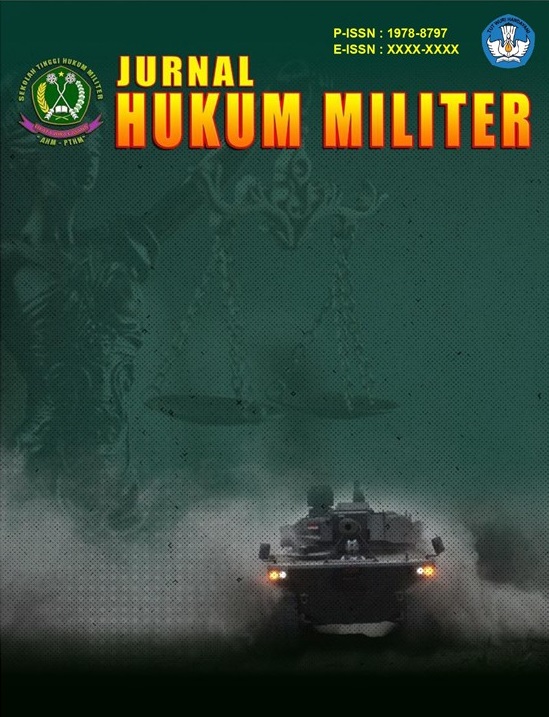ANALISIS YURIDIS PENERAPAN SPLITSING DALAM PENYELESAIAN PERKARA KONEKSITAS DITINJAU DARI KUHAP DAN KUHAPMIL
Main Article Content
Abstract
Abstrak
Tindak Pidana Koneksitas adalah tindak pidana yang dilakukan bersama-sama oleh mereka yang termasuk di lingkungan peradilan umum dan di lingkungan peradilan militer. Pemeriksaan perkara tindak pidana yang melibatkan masyakat sipil dan anggota militer, ada yang diperiksa melalui mekanisme koneksitas dan ada yang diperiksa tanpa melalui mekanisme koneksitas yaitu splitsing (Pemecahan berkas perkara). Penelitian ini bertujuan untuk mengetahui mengenai analisis yuridis penerapan splitsing dalam penyelesaian perkara koneksitas ditinjau dari KUHAP dan KUHAPMIL. Penelitian ini menggunakan tipe penelitian hukum yuridis normatif dan bersifat deskriptif analisis dengan menggambarkan peraturan perundang-undangan yang berlaku dan terkait dalam praktek pelaksanaannya yang berkaitan dengan permasalahan yang akan diteliti. Pengumpulan data melalui metode penelitian kepustakaan (Library Research). Analisis data menggunakan metode deskriptif kualitatif. Hasil penelitian diketahui bahwa penyelesaian perkara koneksitas disesuaikan dengan penggarisan dan batas-batas wewenang dan apabila dilakukan pemeriksaan secara terpisah (splitsing), maka perkara dikembalikan ke penyidik yang berwenang menurut hukum acara yang sesuai dengan peradilannya masing-masing. Dalam hal suatu perkara tidak dilakukan splitsing, maka penyidikan koneksitas akan berlanjut pada penuntutan dan pemeriksaan persidangan sesuai dengan peraturan mekanisme koneksitas yang ada di dalam peraturan perundang-undangan sesuai dengan asas-asas dalam sistem peradilan pidana khususnya asas keadilan, asas kepastian, asas kemanfaatan, serta asas peradilan sederhana, cepat, dan biaya ringan.
Kata kunci : splitsing, koneksitas, sipil, dan militer
Abstract
The Crime of Connectivity is a crime committed jointly by those who are included in the general court environment and in the military court environment. Examination of criminal cases involving civil society and members of the military, some were examined through the connectivity mechanism and some were examined without going through the connectivity mechanism, namely splitsing. This study aims to find out about the juridical analysis of the application of splitsing in the settlement of connectivity cases in terms of the KAUHAP and KAUHAPMIL. This study uses a normative juridical legal research type and is descriptive in nature by describing the applicable laws and regulations related to their implementation practicesrelated to the problems to be studied. Collecting data through library research methods (Library Research). Data analysis used descriptive qualitative method. The results of the research show that the settlement of connectivity cases is adjusted to the outlines and limits of authority and if a separate examination is carried out (splitsing), the case is returned to the authorized investigator according to the procedural law in accordance with their respective courts. In the event that a case is not split, the connectivity investigation will continue with the prosecution and trial examination in accordance with the connectivity mechanism regulations contained in the legislation in accordance with the principles in the criminal justice system, especially the principle of justice, the principle of certainty, the principle of expediency, as well as the principle of a simple, fast and low cost trial.
Keywords: splitsing, connectivity, civil, and military

